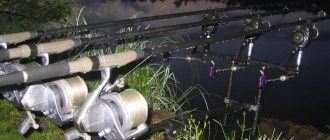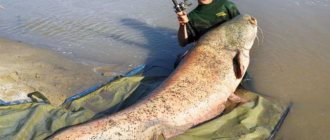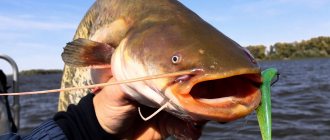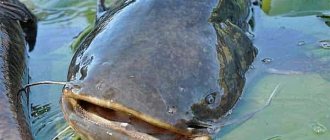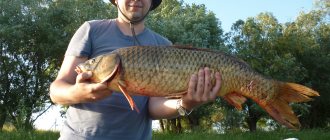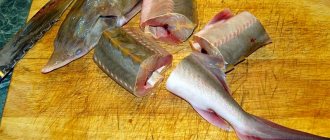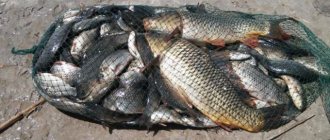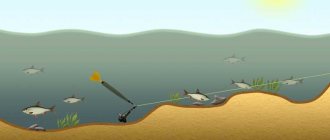Yuri 09.10.2020 266
The debate about which bait is best for catching catfish will never end. The answer to this question is not clear and depends on the time of year, fishing conditions, and time of day. In this article we will talk about this method of catching a river host, such as catching catfish with crayfish. Let's reveal all the secrets about where to find this universal bait and how to bait hooks with it.
Who is a successful fisherman? What kind of person is this who almost always has luck when fishing? What secrets and mysteries of the universe does he know, thanks to which he always has a catch?
The answer to this question is very simple. To become a professional in fishing, you need not only to contemplate the beauty of nature while fishing, but to analyze the situation and study the behavior of fish in different conditions. Thanks to the curiosity of such fishermen, it became known that crayfish meat is a real delicacy for the owner of the river. Many of the caught catfish had crustacean shells in their stomachs.
This circumstance allowed us to conclude that catfish taste crayfish meat. All that remains is to find this bait and go fishing for a trophy.
Catfish bait
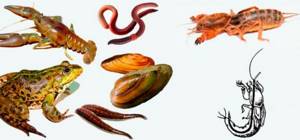
Catfish is a predatory fish that can feed on a variety of foods of animal origin. This predator has a fairly large mouth, so the size of the bait does not play a significant role. Although, when catching small or large catfish, you have to select bait of the appropriate size. There are different baits, both commonly used and exclusive ones, which catfish love, but are difficult to get.
Depending on the season, the use of bait does not have a certain consistency. For fishing to be effective, you should take into account the seasons and select the appropriate baits.
Tackle and fishing methods
Gear for catching catfish with crayfish should be bottom-based. The exception is fishing with quok, where the hooks are baited with crustacean meat, and not with whole arthropods. For fishing, both regular hooks and donkeys with a spinning rod are used. Both installations are fundamentally not much different, and a specific method is chosen depending on preferences; the success of fishing does not depend on it.
The donka is equipped with a monofilament fishing line or a braided cord with a cross-section from 0.5 to 1.0 mm. If the rod is mounted on a spinning rod, a plug-in composite rod with a length of 2.4 to 3.2 meters is suitable. Test rods from 100 to 300 grams.
Multiplier and inertia-free reels with gear ratios from 3.8×1 to 4.0×1 are installed on the whip. The capacity must be 150 meters or more. The reel must be equipped with a reliable friction brake and a baitrunner system. This will allow you to carefully fish out a strong predator and dampen its jerks.
To catch small mustachioed predators weighing up to 5 kg, in most cases ordinary carp hooks are used. To catch larger and trophy specimens, larger catfish hooks are used. For a predator weighing up to 10 kg. knit hooks No. 5/0 and No. 6/0, for specimens weighing up to 15 kg. No. 9 will do. Trophy giants weighing from 20 kg. and more are caught with hooks from No. 10/0 and more.
Spring bait for catching catfish
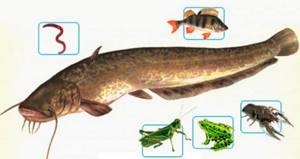
When the water temperature rises to +10ºС, the catfish begins to hunt. This could be as early as April, depending on weather conditions. If spring is early, then the predator also begins to become active early.
During this period, only the upper layers of water have time to warm up, so the catfish goes into shallow water. Despite the fact that this is a nocturnal robber, during this period it can actively feed during the day, and at night it will not respond to any bait.
Since the water warms up in small areas, you should not count on active catfish biting. At the same time, it may peck for a certain period of time, but then show no active signs for several days.
Catfish spawning begins at a water temperature of about +18ºС. The spawning period can last 2.5 weeks. After this period, the catfish goes to rest, after which it begins to actively take bait.
In the spring, the following baits of animal origin are best suited:
- Crawling out . As a rule, when catching catfish, large hooks are used, onto which several crawlers are attached so that they can disguise the hook. Using a crawl you can catch a catfish weighing no more than 3 kg.
- Zhiwiec . Excellent for catching catfish, both small and large, depending on the size of the bait. Moreover, the catfish actively takes on live bait caught in the same reservoir. To catch small catfish, small brushes, perches, minnows, etc. are suitable. To catch larger specimens, weighing 5 kg or more, it is better to use crucian carp or roach.
- Frog . She is a daily representative included in the diet of catfish. Therefore, a bait such as a frog can bring the fisherman a hefty catfish. Place it on a hook by the legs or lower jaw.
- Sparrow . Oddly enough, but this type of bait, fried over a fire, may turn out to be the best bait for catfish. Catching a sparrow will not be difficult if you try. There are many similar designs of bird traps. Therefore, after catching a few sparrows, you can go fishing for catfish.
- Perlovitsa . This bivalve mollusk is found in almost all bodies of water. Catfish are happy to bite on the meat of this representative of the underwater world.
- Locust . This is an exclusive type of bait that is not so easy to find. You should follow her to the southern regions. Several locusts are placed on a hook. It is considered a fairly effective bait and many fishermen try to get locusts.
- Chicken liver. Poultry giblets can also serve as excellent bait when fishing for catfish. The catfish is absolutely not indifferent to the insides of the bird, especially the liver, if you carry out a small preparation procedure. Preparing the bait involves leaving the liver in the sun for some time so that a peculiar smell emanates from it.
- Pieces of fish. Since fish form the basis of the catfish's entire diet, it is excellently caught on pieces of fish or some parts of the fish, such as the head or tail. Moreover, in some reservoirs the catfish prefers the head, and in others - the tail. According to some fishermen, catfish are not indifferent to gobies in tomatoes. Therefore, such bait may not be the most effective. The only problem is how to secure such a piece of fish on the hook.
When catching catfish, an experimental approach plays an important role, allowing you to determine the most attractive bait. Having learned the preferences of the catfish in this way, you can catch a trophy specimen.
Catching catfish with a frog
It is believed that the frog is one of the most popular baits for catfish. It is best to catch frogs in the evening or when it is dark. To catch a frog, you need to shine a flashlight on it, after which you can easily catch it with your hands. A landing net is also suitable for catching frogs. So, the frog must be hooked by its hind legs so that the sting points upward. If the bait is too active, then you can put each leg of the frog on a double hook - this way it will only crawl along the bottom.
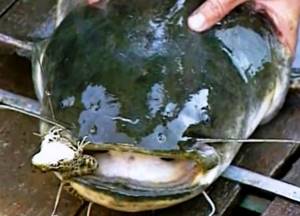
When catching catfish, it is best to start with a donk baited with a worm. It is necessary to string a bunch of worms onto a large hook with a long shank. It is unlikely that a large catfish will be caught with such bait, but such fishing will help a beginner become familiar with catfish leashes. You can also use two hooks and use a feeder to attract fish. For bait you should take a mixture of earth and chopped worms.
Summer bait
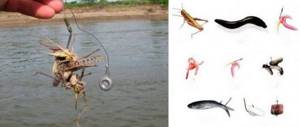
Catfish prefer to become active in fairly warm water. It is worth recalling here that catfish spawning occurs in conditions when the water temperature is at around +18ºС. Therefore, in the summer, when it is really warm outside and all layers of water are warmed up, catfish are most active. The highest activity of this fish occurs in the months of July-August. During these periods, the catfish is nocturnal. During the day, it can rest in thickets of aquatic vegetation or at depth, in holes. Catfish are caught very well on cloudy days, when they can go out to “hunt” during the daytime. During the day, catfish can come out of their hiding places when fishing with quok in any weather. Fishing for catfish in the fog has shown good results.
The following baits may be most effective during this period:
In the summer, catfish have a huge choice in terms of food. These are frogs, fish, and other small animals that for some reason ended up in the water. Therefore, the most attractive will be precisely those baits that are included in the daily diet.
Depending on the bait used, the tackle is cast over a certain distance. If you are using a frog, then you can get by with a short cast, but if it is a live bait, then it is better to cast it further away.
To catch a larger specimen with a crawl, weighing more than 3 kg, you need to place at least 10 crawls on a large hook.
Seasonal preferences of catfish
Each season has its own preferred catfish baits. Properly selected bait can provide a stable bite, and, if you’re lucky, an excellent catch.
After winter sleep, along with the warming of the water, the catfish gradually become more active. In April, when the water temperature rises to 8-10° Celsius, you can start hunting for the mustachioed giant. Large specimens in spring respond more readily to bait in the afternoon. The bite in mid-spring is still very unstable: frequent bites can alternate with complete calm.
When the water warms up to 18° Celsius, catfish spawn. Soon (after a short lull) the eating begins.
The list of baits that catfish bite on after hibernation is very diverse. Among the most common and effective spring baits for catching a mustachioed predator:
- crawling worms;
- live bait;
- fried sparrow;
- pearl barley;
- chicken liver;
- frogs;
- crayfish.
We suggest you familiarize yourself with: Artificial baits for fishing
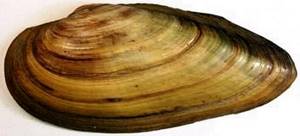
It is important to try different bait options to identify the preferences of the predator at a particular time and in a particular place, but it is better to start spring fishing for freshwater giants by using worms as bait, and only then experiment with other baits (live bait, crayfish and frogs).
The maximum activity of catfish occurs in summer, namely in its second half. In warm weather it is more active at night, and in rainy, cold or foggy weather it can peck at any time. Often, in search of food, catfish leave their burrows in shallow water. Trophy specimens prefer to be in quiet pools.
The choice of summer baits for catfish is impressive, since due to its activity it swallows almost everything. Indiscriminately. In addition, in the summer there are no problems with getting this or that bait. The preferred baits are those that form the basis of the daily diet.
The best summer baits for catfish:
- small bird;
- pieces of fish;
- live bait;
- shellfish;
- frogs
- crawls;
- locusts;
- any large insect.
The fishing method and casting distance depend on the bait you choose. For example, live bait can be used for long casts, as can a bunch of crawlers. You won’t be able to throw a frog far - it is suitable for short casts.
The best time for autumn catfish hunting is night and early morning. At this time of year, he almost never leaves his hole, often waiting for prey directly from the hole. In October-November, when the temperature drops, a period of suspended animation begins, so there are higher chances of effective fishing in September. In one place you can catch up to a dozen catfish of different sizes, so when a catfish bites, you should continue to catch in the same place.
- cancerous necks;
- fried sparrow;
- live bait;
- chicken offal;
- crawls;
- blood sausage or boilies with the smell of blood;
- frogs;
- shellfish
When fishing for catfish, it is advisable to cast several tackles with different baits. When there is a bite, for example on crawlers, it is recommended to change the bait for them on all tackles. This suggests that the mustachioed giant prefers this particular bait at a given time.
During the winter months, the catfish does not leave its hole, actually freezing. The chances of successful fishing are negligible. You can tempt a predator to bite with the help of bright bait. It responds best to live fish, especially asp and rudd. Such live bait is able to move energetically in cold water, attracting the attention of a predator. An alternative option for winter catfish fishing is fishing with lead heads.
Autumn bait
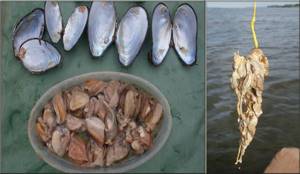
In the autumn, catfish can be caught well in the morning or evening, and when there is fog outside, catfish can be caught both during the day and at night. During this period, the catfish is already at depth, in holes, from where it will have to be retrieved using bottom tackle. At the same time, catfish, like other types of fish, tries to stock up on nutrients, so autumn fishing can be the most productive with the right fishing strategy. During this seasonal period it is better to use the following baits:
When using such bait, you can always count on a catch, but do not forget about heavy artillery, such as fried sparrow or poultry offal. Some fishermen use sausage and bloodwort as bait. And this is not surprising, since blood certainly attracts catfish. In fishing stores you can buy blood-scented boilies. On some bodies of water, such baits turn out to be the most effective.
Spinning baits for catfish
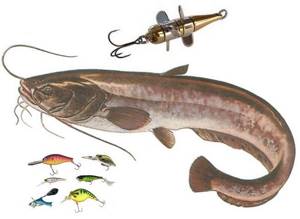
Catfish can be caught with any suitable gear, including spinning, using artificial baits, such as:
- oscillating spoons;
- spinners;
- wobblers;
- jig - bait (silicone).
The technique of fishing with a spinning rod is the same as when fishing with a spinning rod for another predator, such as pike or perch. In this case, the main thing is to find a catfish site. If there is no catfish bite for 20-30 minutes, then you can safely move to another promising place. Each time you cast to a new place, you should use a variety of baits to find out the preferences of the catfish. The most promising places may be whirlpools, holes, edges, whirlpools, etc. Catfish can be identified by the appearance of whirlpools on the surface of the water, where they cannot exist in nature. Catfish do not hunt silently, although they have distinctive features.
Considering the fact that catfish can be at depth, it is better to use jig baits of the appropriate size. These can be quite weighty models, especially when fishing in the current. Catfish respond well to tapping jig baits on the bottom of the reservoir. Massive “oscillators” or deep-sea wobblers show good results.
When fishing for catfish, special attention should be paid to the reliability of the gear, as this is not an unimportant factor in successful fishing. Considering that a specimen weighing several tens of kilograms can bite, you should very carefully equip your fishing rod with the appropriate fishing line and reel.
When fishing from a boat, you need to take safety measures, since the catfish bite can be powerful and unexpected. When fishing from the shore, you should think over the tactics of landing a trophy specimen, removing all the interfering objects around the circumference.
Harvested baits
The catfish is an almost omnivorous predator. The list of his favorite treats is impressive. The most effective baits produced include:
- Crawlers are an excellent bait, especially for small catfish. After the rain, stocking up on the required number of worms will not be difficult. Some individuals reach a length of 20 cm. A bunch of crawlers should be put on the hook immediately, trying to completely hide it;
- leeches - like leeches, they are planted in several pieces. Leeches live in almost all bodies of water, but they are quite difficult to catch, but they can be stored in clean water for a long time. To avoid the leech getting caught on the hook or bottom, it is advisable to cut off the sucker;
- Mole crickets are one of the favorite foods of the barbel. This insect is found in small quantities in garden plots. It prefers well-dug soil, so bait is used in spring and autumn. The entire mole cricket is placed on the hook. Due to the limited number, the bait is not so popular, although it is very effective;
- locusts are an exotic bait that catfish eat with pleasure. It is not found everywhere; it is more common in the southern regions. Catching locusts is not at all easy, and preparing them in the required quantities is extremely difficult. One insect is unlikely to tempt the mustachioed monster to bite, so you should catch several individuals at once;
- live bait is a traditional bait for catching many predators, including catfish. The size of the expected prey depends on the length of the baitfish. If catfish weighing several kilograms are caught on small perches, minnows and brushfish, then roach or rudd should be used to catch adult specimens. At the same time, the predator bites noticeably better on live bait from the same reservoir;
- Frogs are the everyday food of catfish, so such bait can provide a good catch. Finding frogs is not at all difficult, but catching them is not an easy task. The frog clings to the lower jaw, legs or abdomen;
- crayfish are also included in the predator’s daily diet. The joint (bottom) habitat makes crayfish an extremely attractive bait for barbel. To catch crayfish you need to set up a crayfish trap or get into the water. It is better to take recently caught crayfish. The arthropod should be baited by passing the hook under the shell, placing the sting near the eyes. The cancer will remain alive and will not lose activity, significantly increasing the likelihood of a bite;
- Sparrow is the most exclusive bait used for catching catfish, however, it often turns out to be the best among possible alternatives. The sparrow should first be fried over a fire. Ideal bait for large predators.
- pearl barley is one of the favorite delicacies, which is not difficult to obtain. This bivalve mollusk is found in sufficient quantities in shallow waters. The hook needs to be baited with the flesh inside the shell. Before planting, it is advisable to leave the pearl barley pulp in the sun. The meat will dry out a little and will stay on the hook better.

We invite you to familiarize yourself with: White bream biting calendar: how to catch bream in winter, spring, summer and autumn
How to properly attach a crayfish to a catfish
Depending on what kind of fish takes -
large or medium and small - for bait they use either a whole crayfish, or rather its body, or parts of it, i.e. claws (large crayfish) and a neck (i.e. tail), which can be divided into 2 or even 4 parts.
Sometimes, however, large fish are caught by putting 2 large or 3 small crayfish tails on a hook. It is most convenient to catch a crayfish
that is ready to molt or has just moulted and is still soft (for hatching), but in the absence of such, you can get by with hard crayfish that are not yet ready to molt, choosing the darkest and hardest ones, or crayfish with already hardened young skin. The latter are worse, since they are very difficult to peel off.
Crayfish, ready to molt or soft,
is placed on a hook (medium or large number) differently in different areas.
In any case, the legs break off, and in hard ones, in addition, the claws are first broken off. The paws throw water for bait, as do the claws, but the larger claws are best reserved for catching small fish on small hooks. It is most convenient to attach the crayfish in such a way
that the tip of the hook is hidden in the “neck”, because the fish almost always grabs the crayfish from the tail and, therefore, hooking will be more accurate.
This is how most soft cancers are planted.
The hook is stuck into the (left) eye and pulled out near the second pair of legs, then the crayfish is put on a leash for a bit and the hook is finally tucked into the tail.
It is also good to attach the crayfish, threading the hook into the sides, into the edges of young skin, twice. The latter method is most suitable for crayfish that are ready to molt, which have to be peeled off first. This is done like this:
the crayfish’s claws and legs are broken off almost right down and the tail is cut off, but not completely, but leaving one or two joints or links (otherwise it’s easy to release the liver), then the tip on the forehead is trimmed a little, after which the old black skin is removed by itself from the back of cancer.
Most fishermen
Keeping in mind that usually either a half-sized crayfish without a tail and claws, or a whole soft crayfish with soft claws, is attached to the hook, first thread the hook into the middle of the tail, along the intestinal canal, then, taking it out at the bottom of the 1st pair of legs, so that the neck will be threaded with a leash, again, stepping back half a finger, insert the hook inside the crayfish so that its point comes out either under the eyes, or under the upper skin between the eyes, and try not to pierce it.
The whole neck or parts thereof and claws are mounted
(having previously peeled them, as said) onto smaller hooks, and it is useful (since this bait does not hold well on the hook) to tie it with a hair, thread or silk.
The whole neck is attached,
of course, in the middle and like a worm, it is better to use whole claws, torn off and cleaned from the body itself, to their full length; they are attached from the upper narrow end, and the hook is hidden in the claw when it bifurcates.
Crayfish are caught mainly with bottom gear, less often with float and other gear.
When fishing on the bottom with a good leader from the vein, the thickness of the fishing line has almost no effect on the bite. The weight of the sinker is proportional to the speed of the current that carries the bait; for the bottom one, it is best to use a sinker of a strongly flattened oval shape or a mobile quadrangular one, that is, one that moves freely through the forest to the leash (see above); under this condition, the fish does not hear the sinker and its bite is directly transmitted to the tip of the fishing rod. Sometimes the sinker is tied to the very end of the fishing line, and the leash with a hook is 25-30 cm higher. With this method, you can notice the slightest bite, and the fish also does not encounter such strong resistance as with the usual method of attaching a stationary sinker. For all methods of fishing for crayfish, it is necessary to have a net.
Catfish for locusts
The green grasshopper is often confused with the locust. These are different insects! The grasshopper is a predator, and the locust is a herbivore. There are also external differences. If interested, search on the Internet.
For fishing, the beauty of the wings and the size of the insect are important. Catfish loves bright colors. When you hook a grasshopper or a locust, they spread their beautiful wings in farewell. Two locusts attached to a hook are a very good bait for catching catfish in the summer. It’s just difficult to catch both locusts and grasshoppers.
Locusts are planted like grasshoppers.
In the July heat, I had to find locusts under cow dung, where they were hiding from the scorching sun. I was wandering around the meadow and looking for something to put on my hooks and suddenly this happened. I collected a fair amount of it with my hands, the insects didn’t try to jump or fly away.
There are many types of locusts, some are light green, some are dark, and they are often confused with green grasshoppers.
Catfish on a leech
Medical leech
Somyat fishermen of the Lower Don call the medicinal leech “Mike” (from the month of May)
Typically, leeches are used as an addition to a set of baits on a hook.
There is a secret: attach a medicinal leech by its tail to the very tip of the hook. When the catfish swims up to the hook and feels the bait with its whiskers, the leech clings to the “face” of the catfish. You can consider this a tale of fishermen - “somyatniks”
We suggest you familiarize yourself with: Fishing with a float rod - Fishing with a float in spring, summer and autumn
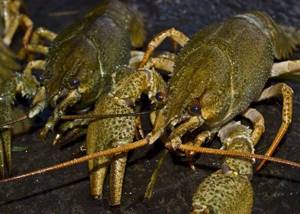
I don't like collecting medicinal leech. You need to go into the water in a place where there are a lot of them and move your legs, hit the water with a reed. Then you go ashore (more like crawling into the mud up to your knees) and collect leeches from your feet. There were cases when leeches climbed into the oud (a forgotten Russian word). Therefore, it is better to fish in overalls, which I personally did not do. I have no desire to catch medicinal leeches, to be honest. But they are beautiful and nimble on the hook.
False horse leech
Medical leeches suck blood, while false horse leeches gnaw meat. These are different leeches!
False horse leeches are caught on meat and fish, placing them in shallow water in a place where there are a lot of leeches. You need to put grass on a piece of fish. I put it in the evening and collected the leeches in the morning.
I had to catch catfish using leeches alone. I used small hooks and hooked on an average of four leeches. It’s bad when the leech covers the hook’s sting with its dense body - a catfish escape or an unsuccessful hooking is guaranteed.
Caterpillars
Lilacs, Zelenukhas, Drestukhas, Euphorbias and others. A delicacy for catfish. They are very rare in our area. As a pioneer, I collected the same “greenflowers” and “Drestukhas” right in the central city park of Rostov-on-Don. Caterpillars fell from the trees after a strong wind. There were beautiful caterpillars with horns on the lilacs. Yes... the world is changing.
"BARK BEARD". Caterpillar of the wood moth.
I ask you to carefully read what is written below about the bark beetle. Miracle baits DO NOT EXIST! Please understand this and accept it somewhere in the depths of your soul. You can break out of the slave shackles of fishing once a season and catch more fisherman living on the water. But this is an accident, a gift to you from the World!
So it is with the unfortunate bark beetle, which had the fate of becoming an expensive commodity, which novice fishermen are chasing. Miracles do not exist! People still don’t know what electricity is, and fishermen are ready to destroy rare butterflies for the sake of ghost fishing. The price of caterpillars of the fragrant wood moth (willow wood moth) reaches up to 150 rubles apiece!
Leave the bark beetle alone. There are many baits for catching catfish besides the bark beetle.
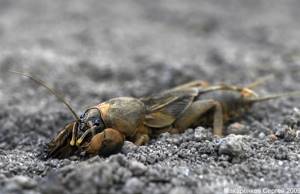
The bark beetle has always been used as a bait for the main bait; it is tied above the hook, rather than being placed on the hook. This is a delicacy, a delicacy for catfish.
In fact, the caterpillar that fishermen call the bark beetle is not such a caterpillar. This is a fisherman's language. There are more than 500 species of bark beetles, and the odorous wood borer (willow wood borer) is not related to them. Bark beetles are beetles, and the wood borer is a butterfly. Large, gray, rare butterfly. In some areas, the fragrant woodborer is listed in the Red Book.
The text above the photo was written on June 13, 2014. The text below the photo was written sometime in late 2011 and remains unchanged. To some extent, these texts contradict each other, but you yourself must decide what to do.
Bark beetle is difficult to obtain but is a delicacy for catfish. It has a strong specific odor. It is so strong that you can smell it when passing by a tree in which bark beetles have settled. The presence of a bark beetle in the bait when fishing with quok, and especially with donkey, is very welcome.
BARK BEETLE is the best bait for catfish in the summer. It is especially good to plant one or two mole crickets and tie them above the bark beetle hook. This is a real delicacy for catfish and if you have such a bait, you can be sure of fishing success. In any case, the failure cannot be attributed to the nozzle.
The bark beetle is very scarce and difficult to obtain. Because of this, its price in the summer of 2011 reached 50 rubles per caterpillar. It is possible that in other regions of Rus' there are many bark beetles, but I am in the Lower Don.
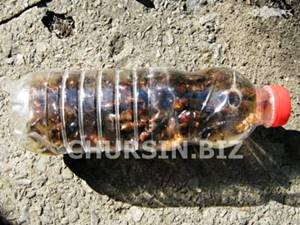
Two baits for catfish - a mole cricket and a bark beetle - are the best in the summer. Especially when catching catfish on donkeys. When fishing with quok, the bark beetle is not so important. If you are fishing, or trying to catch a hook, do not bother your brain with unnecessary thoughts. Take bait that is easier to obtain or buy.
Fishing with live bait
One of the most popular types of bait for catfish when fishing in Astrakhan is live bait or any live fish you caught on the same day or the day before. It is believed that catfish prefer bait that emits a strong odor. However, live fish is also an attractive bait for catfish. Like all bottom-dwelling fish, catfish have an incredibly sensitive lateral line and can sense the movements of live fish at quite an impressive distance.
One of the undeniable advantages of live bait is that it can maintain its viability for a long time. It is best to fish for bait for catfish in the same body of water where it is found, since food that is already familiar and loved will be much more interesting for the catfish. On the other hand, during periods when there is not enough food and catfish become very voracious, any fish, even those bought at the nearest store, is suitable for fishing with live bait.
Leeches, crawlers and insect larvae
Oddly enough, you can catch catfish not only with large bait, but also with an ordinary worm. It often happens that while fishing for live bait, fishermen come across small catfish. Therefore, if you want to try your luck, but nothing else is at hand, you can safely use crawlers. Just don’t skimp when putting them on a hook; in the case of catfish, it’s best to use a bunch of worms right away.
An excellent bait for catfish is bark beetle larvae. These are fleshy, dense larvae that can be found in a rotten tree trunk in the thicket of a forest. Characteristic features of such a tree are small sawdust around and small round holes in the trunk. Bark beetle larvae are an excellent protein food that any catfish will like.
Catfish also feed on leeches. If you manage to collect them in the muddy soil of overgrown reservoirs, then you can be satisfied - this bait can be stored for up to several months in an ordinary jar with clean water.
The most significant drawback of all of the above baits is that not only catfish, but also smaller fish enjoy them. And if not every fish may be interested in a bark beetle larva or a leech, then the worms can be destroyed long before the catfish in their shelter smells them.
Crayfish and shellfish
Cancer is a bottom dweller. That is why it is one of the most attractive baits for catfish, which also live on the bottom. It is noteworthy that the crayfish must be alive, since such bait will be more attractive to catfish. You need to know how to properly hook a crayfish. To ensure that he retains the ability to remain alive and active longer, do not pierce the middle of his tail under any circumstances. It is in this place that the main artery of crayfish passes through and the puncture is fatal - the cancer dies very quickly. It is best to place the crayfish in the upper part of the shell, just above the eyes. When it hits the bottom, such bait will look very natural to the catfish, moreover, the crayfish will be able to move and defend itself from the predator, and this will not leave any catfish indifferent.
Ordinary river bivalves are good bait as bait. They are planted in several pieces, hiding the hook in the flesh of the smallest one. In the same way, you can use grape snails and squid carcasses purchased at the store. Spoiled shrimp will also work, as well as any seafood whose quality you have obvious doubts about.
Frogs and lizards
It is known that catfish are not averse to feasting on frogs and lizards during times of active breeding along river banks. In the evenings, catfish specifically come to the surface and inspect the shallows in search of concentrations of frogs and toads.
Frogs and lizards can easily be kept alive for days or even weeks. Frogs must be stored in moist containers, but not completely immersed in water, but so that they have the opportunity to breathe atmospheric air. The storage temperature should not exceed 25 degrees, but it is best to place the container with amphibians in the refrigerator, lining its bottom with damp moss.
Lizards and salamander larvae are good bait, but catching them yourself is not so easy, and in stores these amphibians are quite expensive. If you have the opportunity to try this bait, experiment, however, it is reliably known that a newt or lizard is absolutely no better at catching than an ordinary frog or toad.
Insects
A grasshopper or mole cricket is perfect for catching catfish. True, mole crickets are not found everywhere, but if you manage to find them, you can safely use this insect as bait. Mole crickets are very tenacious and can even remain viable in water for several hours, although they are underground inhabitants.
Catfish also go well for grasshoppers or crickets. The latter, by the way, can not only be caught yourself, but also purchased at a pet store. There they are sold as food for lizards and frogs. A grasshopper or cricket bait is best combined with a crawl so that the catfish can smell the prey and spot it from afar.
It has been observed that when large grasshoppers fall to the surface of the water, catfish rise from the bottom to reach the tasty insect.
How to make donka for catfish yourself?
Donka can be with or without a rod. The rod must be durable and have a powerful blank, since there are cases of extreme fishing. Special carp and sea fishing rods are ideal for catching catfish on a donk. This can be noted for coils as well. Experienced fishermen advise equipping the donk with powerful, inertia-free models of size 4000 with a large spool.
Note that the thickness of the fishing line depends on the intended production. The main rule when choosing a fishing line is that the breaking force should exceed the weight of the catfish. The most commonly used line is 1 mm thick. The sinker must be selected taking into account the strength of the current and fishing depths. On stagnant bodies of water, a sufficient weight can be 20-50 g, on fast-flowing rivers - 100-200 g.
The choice of hook depends on the bait, but they must be strong and powerful.
